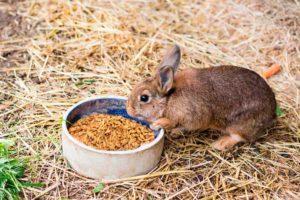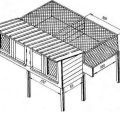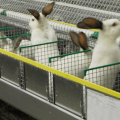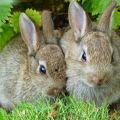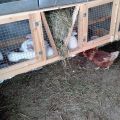Rules for breeding and keeping rabbits from scratch at home
Before buying rabbits, you need to decide for what purpose their breeding is planned: to obtain fur or meat. The breed chosen must fit the purpose. If a decorative pet living at home does not require large expenses, then for industrial breeding of rabbits, you will have to spend significantly on equipping a rabbitry, feed, vaccinations, care and hygiene products, as well as spend a lot of time and effort.
Content
Choosing a breed for breeding
Meat rabbit breeding predominates, breeding of rabbits for the purpose of obtaining fur is not widespread. Rabbit meat is tasty, nutritious, easy to digest, suitable for dietary nutrition. Fur clothes and hats are sewn from skins, hoods and shoes are trimmed.
For meat
The most popular breeds for breeding for meat are:
- california rabbit;
- New Zealand (red and white);
- French ram;
- flandre.
These types of rabbits are characterized by rapid weight gain, breeding does not require large feed costs. By 4-6 months, a young individual weighs about 5 kg.

On skins
For breeding for skins, select breeds:
- silver rabbit;
- blue Viennese;
- black-brown;
- Soviet chinchilla;
- Russian ermine.
For meat and fur
Rabbit breeds popular for breeding for both fur and meat:
- butterfly;
- giant (white and gray);
- chinchilla.
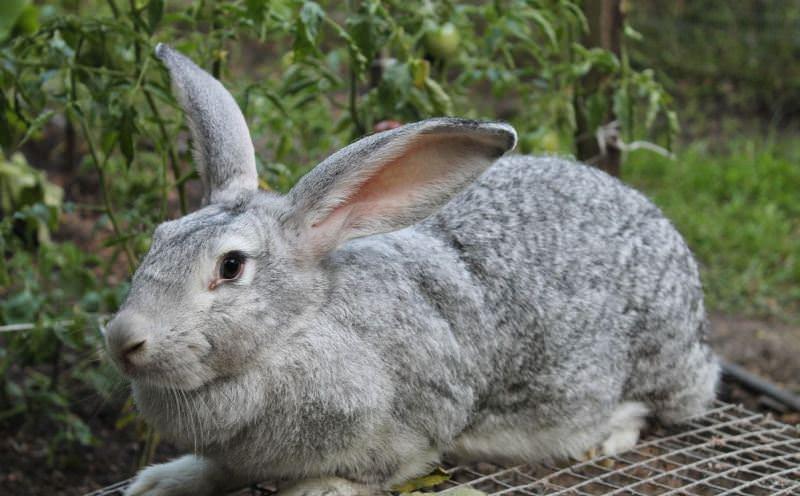
Things to consider when buying
To successfully start a business from scratch, you should know the criteria for choosing rabbits for breeding:
- the coat is smooth, shiny, without tangles and bald patches;
- the body is flexible, the muscles are developed;
- the back is elongated, without sagging;
- the auricles are covered with short hair on the outside, light pink on the inside;
- unbroken ear cartilage;
- the bite is correct, the upper jaw protrudes over the lower;
- the eyes are clean, there is no redness, discharge;
- the nose is clean, cool and moist to the touch;
- the rabbit does not panic when a person approaches, behaves adequately;
- the area around the anus is clean, the coat is not stained with dried feces;
- the belly is soft, no seals are felt;
- genitals clean, no discharge, pink skin.
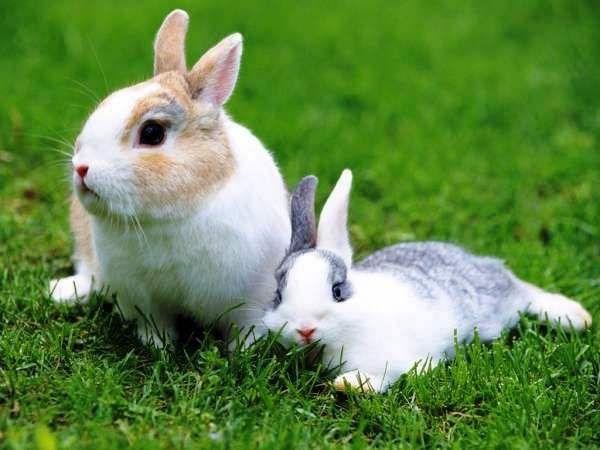
To get healthy and purebred rabbits, you should buy from an experienced and reputable farmer.
Content methods
Industrial breeding of rabbits requires not only a lot of money and labor, but also a large space: a farm, a summer cottage. Pets are kept in closed rabbitries or in open cages, pits, aviaries.
Cells
Cage equipment is the most convenient and common option of all possible methods of keeping rabbits. Its advantages:
- the ability to accurately dose feed;
- ease of tracking the state of individuals;
- exclusion of uncontrolled reproduction;
- ease of breeding, care, disinfection, vaccination.

It is convenient to keep the cages in a barn, a specially built rabbitry, and even in a private house if there are few rabbits. The structures can be made portable so that during the warmer months the animals can be taken out into the yard.
Rules for making cages at home for novice farmers:
- The optimal cage size per individual is 1 m2.
- The cage should be divided into two sections: an open section and a house.
- A mother cell is placed in the cage of a pregnant rabbit - a box for rabbits measuring 50 × 30 × 25 cm, the diameter of the hole should be 18-20 cm.
- Partitions and doors make it easy to clean and disinfect cells.
- The back and side walls of the cage are wooden, the front one is mesh.
- The bottom is wooden or plastic, but not made of metal mesh, otherwise the rabbits will cut the paw pads.
- A removable tray for urine and feces is installed under the cage floor.
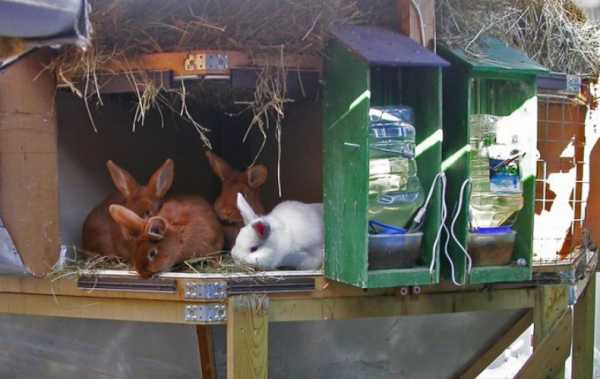
Aviaries
To keep rabbits in conditions close to natural, aviaries are built.
The advantages of breeding in such conditions:
- activity of rabbits;
- ensuring strong immunity;
- small care costs.
An aviary fence is buried 60 cm in the ground, its height above ground level should be 1.5 m.For one individual, a space of at least 1 m is required2... The fence is made of mesh, boards, slate plates. A canopy is installed over the aviary to protect it from precipitation and sun.
Pits
The pit breeding option is chosen by farmers engaged in rabbit breeding for meat. Breeding rabbits for fur in this way is not acceptable. Pits are made both in the country and in urban settings. The main thing is a low level of groundwater and soil without stones.

For breeding, 20 rabbits dig a hole 2 × 2 × 1 m. The floor can be left empty, or you can close it with a net or boards, under which you can make a slope for waste (or put a pallet). If the floor remains empty, it is lined with straw, which must be replaced regularly.
This method of breeding rabbits is convenient, but there are several significant disadvantages:
- inability to control reproduction;
- the appearance of offspring with anomalies due to closely related crossing;
- gradual feralization of rabbits;
- frequent fights between males.
Sheds
It is convenient to breed rabbits in sheds - long sheds in which non-portable cages are placed in rows in several tiers. This way of breeding significantly saves space, thanks to which it is possible to raise a large number of individuals at the same time. In warm months, the sheds are not heated; in winter, the heating system must be turned on.

Mini Farms
Academician Igor Nikolayevich Mikhailov has developed constructions that are convenient in the farm where it is planned to breed a large livestock. In 2-3 tiers, spacious cages are installed, accommodating 20-25 individuals. Cell design:
- pitched roof;
- mesh floor for the exit of feces and urine;
- outer pipe for gas exchange;
- insulated north wall;
- south wall opening for ventilation.
To simplify the care of rabbits in the cages, automatic systems for feeding and water supply, and waste removal are installed.
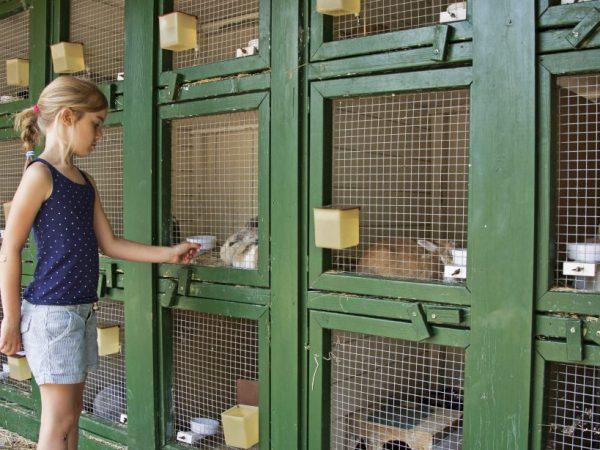
The nuances of care
Rabbits are sensitive to environmental conditions, get sick if the farmer does not want to take care of them properly, ignores the rules of hygiene.It is necessary to clean the rabbitry 2 times a week, change the bedding in the cage, disinfect the equipment, wash the drinkers and feeders daily, change the water, and remove rotten food and feces. It is better to use straw or sawdust as bedding.
Rabbits should be kept in a room where the temperature is from +18 to +20 ° C, air humidity is about 50%, good ventilation, but no drafts.
In the summer months, there is enough sunlight, and if the weather is clear, then a shading canopy is used. In winter, additional lighting sources are required.
Features of the diet for feeding
In order to raise healthy rabbits, it is necessary to correctly formulate a diet for them. It should be balanced and varied, including:
- hay;
- grass;
- vegetables, roots, twigs;
- compound feed;
- grain food.

Overfeeding rabbits is not allowed. It leads to obesity, due to which animals become less active, give a small number of offspring. In the cold season, rabbits are given more root crops and vegetables (zucchini, carrots, pumpkins, fodder beets, boiled potatoes) and silage. Hay and succulent plant foods should make up 30% of the diet, and compound feed and grain feed - 70%.
Do not feed rabbits:
- legumes;
- nuts;
- raw potatoes and food beets;
- cabbage;
- pasta and bakery products;
- sweets;
- meat and sausages;
- waste from the master's table.

Mating, pregnancy and okrol
In rabbits, breeding occurs outside the seasons. Due to their high fertility, it is possible to breed large livestock in a short time. In summer, a rabbit's estrus lasts 8-9 days, in winter - 5-6. Individuals are distributed so that the male covers 8 females.
The rabbit can mate 5 times during the year, giving up to 40 cubs. There are 6-12 young rabbits in the litter. A couple of days after giving birth, the female is ready for new breeding. Females who have reached 5 months of age and 7-month-old males should breed. The female is placed with the male in the cage for 10-15 minutes.
Pregnancy lasts 28-30 days. A pregnant individual becomes aggressive, does not allow herself to be touched. The rabbit is carefully looked after, protected from stress, and the daily portion of food is increased. Before giving birth, the rabbit builds a nest from straw and fluff torn from the breast. There is no need to help the female in labor.

Growing young animals
Rabbits are born blind and naked, begin to see after 10 days, and are covered with fur after a month. From the 3rd week of life, milk teeth begin to change to permanent ones.
A young individual weighs:
- 50-60 g immediately after birth;
- 80-120 g after 2 days;
- 2-3 kg after 3-4 months.
Rabbits should not be touched until they are covered with fur, otherwise a nervous rabbit can destroy them. After 50-60 days from birth, the offspring are removed from the mother. Young rabbits should be raised in the same conditions as mature individuals. There should be plenty of space in the cage to keep the pets active.
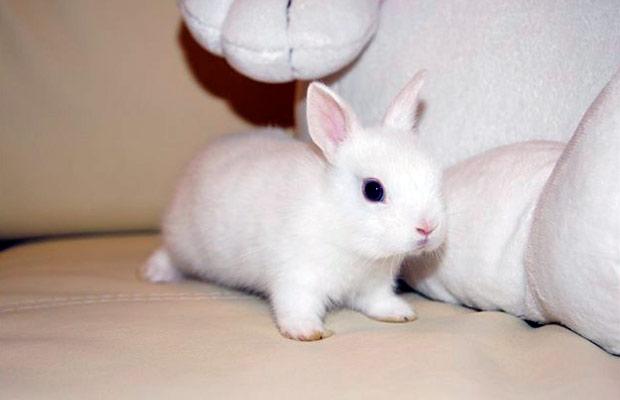
Rabbit slaughter methods
When bred for meat, rabbits are slaughtered at 4 months of age. To obtain fur, the slaughter period is postponed to 6-7 months. There are several methods of slaughter:
- mechanical (most common);
- electric discharge;
- French (vascular rupture);
- using an automatic pin;
- embolism (introduction of air bubbles into a blood vessel);
- twisting of the neck.
In the mechanical method of slaughtering meat or fur, a heavy object is struck with force on the forehead, back of the head or nose of an animal suspended upside down. The carcass is clinging to the spacer, skinning, gutting, bleeding.

Rabbit diseases: symptoms and their treatment
Rabbits are susceptible to a variety of infectious and non-infectious diseases, of which the most common are:
- Pneumomycosis is a fungal pulmonary disease, accompanied by sneezing, heavy breathing, yellowing of the mucous membranes. Associated with poor hygiene. There is no treatment, sick individuals are killed, cells are treated with formalin.
- Myxomatosis is a fatal viral disease manifested by nodular formations on the head and in the genital-anal area. For prevention, animals are vaccinated.
- Hemorrhagic viral disease is another incurable disease. Therefore, we must not forget about timely vaccination.
- Scabies, manifested by scaling of the skin. The affected body is smeared with turpentine. The cage is disinfected.
- Bronchitis appears from temperature fluctuations and drafts. Suitable medicines are "Brovaseptol", "Tromexin", "Brovaf".
- Helminthiasis occurs when hygiene is not observed. For treatment, the drug "Naftamon" is used.
- Conjunctivitis occurs due to eye injuries or a deficiency of retinol in the rabbit's body.
- Mastitis in a nursing rabbit is manifested by hardening and redness of the nipples, the appearance of sores. The disease is serious and must be dealt with by a veterinarian.

To prevent a possible epidemic, the purchased rabbit is kept in quarantine for 3 weeks.
Mistakes of inexperienced farmers
Novice farmers make primitive mistakes in breeding rabbits, which leads to the collapse of the business. Do not do the following:
- forget about hygiene in the rabbitry;
- place cells in heat and draft;
- ignore vaccinations and preventive visits to the veterinarian;
- feed rabbits without checking for the presence of poisonous herbs (milkweed, bindweed, tansy, larkspur, hemlock, wild garlic, dope);
- ignore the underdevelopment of the maternal instinct in the rabbit (females who refuse offspring, devouring it, are not allowed to breed).
Also, a novice farmer should consider the moral side of breeding rabbits. Not everyone can kill animals, gut them. You can entrust this business to another farmer, but then the cost of production will increase, which will negatively affect the profitability of the business.
